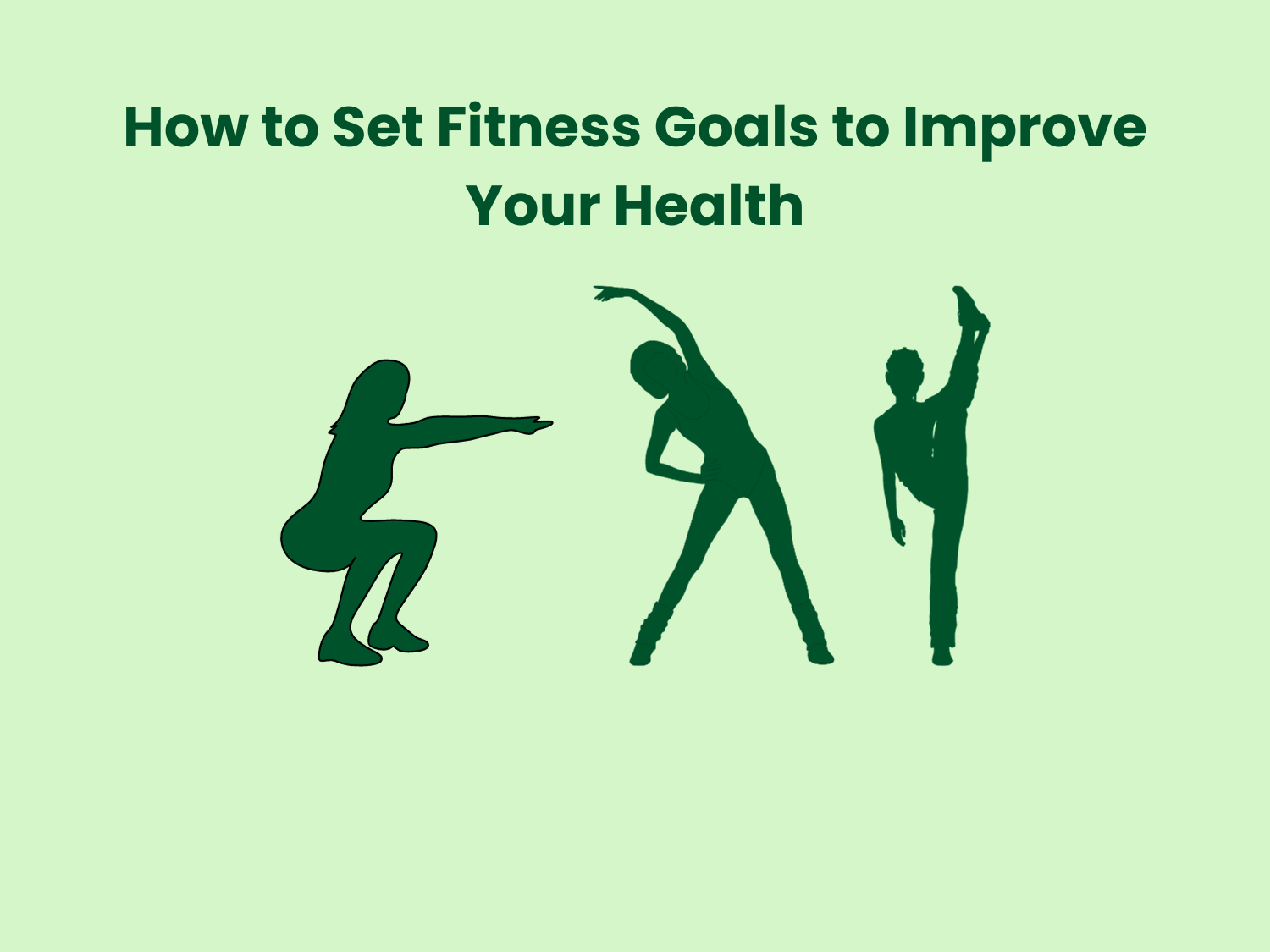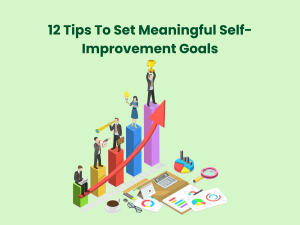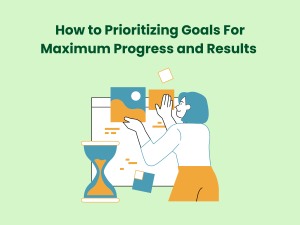Establishing health and fitness goals creates focus, motivation and a sense of purpose around optimizing your physical wellbeing. Well-crafted goals turn aimless workouts into targeted progress. They lead to higher energy, lower disease risk and greater longevity.
What is a Fitness Goal
A fitness goal is a specific and measurable objective related to physical activity, exercise, and overall well-being. These goals are set to improve or maintain physical fitness, health, and performance. Fitness goals can vary widely based on individual preferences, fitness levels, and health considerations.
20 Benefits of Fitness Goals
Setting and working towards fitness goals can bring about numerous physical, mental, and overall well-being benefits. Here are some key advantages of establishing and achieving fitness goals:
- Improved Physical Health:
- Fitness goals often lead to improved overall physical health, including cardiovascular health, muscular strength, flexibility, and endurance.
- Weight Management:
- Fitness goals related to weight loss or maintenance contribute to a healthier body weight, reducing the risk of obesity-related health issues.
- Enhanced Mental Health:
- Regular physical activity associated with fitness goals is linked to improved mood, reduced stress, anxiety, and depression, and enhanced mental well-being.
- Increased Energy Levels:
- Regular exercise, a common component of fitness goals, can boost energy levels and combat feelings of fatigue.
- Better Sleep Quality:
- Regular physical activity supports better sleep patterns, leading to improved sleep quality and overall restfulness.
- Strengthened Immune System:
- Regular exercise can enhance the immune system, making individuals more resilient to illnesses and infections.
- Reduced Risk of Chronic Diseases:
- Engaging in physical activity as part of fitness goals can lower the risk of chronic diseases such as heart disease, diabetes, and certain cancers.
- Improved Cardiovascular Health:
- Cardiovascular fitness goals, such as improving endurance, contribute to a healthier heart and circulatory system.
- Increased Muscle Tone and Strength:
- Resistance training and strength-focused fitness goals lead to increased muscle tone, strength, and functional abilities.
- Enhanced Flexibility and Mobility:
- Fitness goals targeting flexibility and mobility contribute to improved joint function, reducing the risk of injuries and enhancing overall movement.
- Boosted Self-Esteem:
- Achieving fitness goals, whether they are related to weight loss, muscle gain, or improved performance, can boost self-esteem and body confidence.
- Stress Relief:
- Engaging in physical activity releases endorphins, which act as natural stress relievers, promoting a sense of relaxation and well-being.
- Increased Productivity:
- Regular exercise associated with fitness goals has been linked to increased cognitive function and productivity.
- Healthy Aging:
- Fitness goals contribute to healthy aging by promoting bone density, joint health, and overall physical resilience as individuals grow older.
- Improved Posture:
- Fitness goals focusing on core strength and posture can lead to improved body alignment and reduced strain on the musculoskeletal system.
- Social Connections:
- Participating in group fitness activities or sports as part of fitness goals can foster social connections and a sense of community.
- Enhanced Focus and Concentration:
- Regular physical activity has been shown to enhance cognitive function, focus, and concentration.
- Positive Lifestyle Changes:
- Pursuing fitness goals often involves adopting healthier lifestyle habits, such as improved nutrition and reduced sedentary behavior.
- Increased Longevity:
- Regular physical activity is associated with increased life expectancy, contributing to a longer and healthier life.
- Personal Achievement and Satisfaction:
- Accomplishing fitness goals provides a sense of personal achievement and satisfaction, motivating individuals to continue making positive lifestyle choices.
Overall, the benefits of fitness goals extend beyond physical appearance, encompassing mental health, disease prevention, and an enhanced quality of life. Regular physical activity, combined with specific fitness goals, forms a powerful foundation for holistic well-being.
Setting Impactful Fitness Goals
Follow these best practices for optimizing exercise goals:
- Set SMART Goals:
- Specific: Clearly define your exercise goals. Instead of a vague goal like “get fit,” specify what “fit” means to you, such as “run a 5K within six months.”
- Measurable: Establish criteria to track progress, like the number of workouts per week or increased weight lifted.
- Achievable: Ensure your goals are realistic and feasible given your current fitness level, schedule, and other commitments.
- Relevant: Align your goals with your overall fitness aspirations and ensure they are meaningful to you.
- Time-Bound: Set a timeframe for achieving your goals, creating a sense of urgency and motivation.
- Include a Mix of Goals:
- Performance Goals: Focus on specific achievements, such as running a certain distance, lifting a particular weight, or improving your workout time.
- Activity Goals: Include goals related to the frequency, duration, and type of exercises you want to incorporate into your routine.
- Nutrition Goals: Consider aspects like maintaining a balanced diet, staying hydrated, or achieving specific nutritional milestones.
- Holistic Goals: Include goals that encompass overall well-being, such as stress reduction, better sleep, or improved mental health.
- Vary Timeframes:
- Short-Term Goals: These are achievable within a few weeks or months, providing a quick sense of accomplishment and motivation.
- Medium-Term Goals: These extend to several months or a year, offering a balance between short-term wins and long-term progress.
- Lifelong Goals: These are overarching objectives that align with your broader fitness journey and can evolve over time.
- Schedule Workout Plans:
- Plan Regular Workouts: Create a schedule that includes regular workout sessions to align with your goals.
- Diversify Workouts: Incorporate a mix of cardio, strength training, flexibility exercises, and rest days to prevent burnout and maintain overall fitness.
- Tailor Goals to Your Starting Fitness Level:
- Gradual Progression: Adjust goals based on your current fitness level. As you improve, gradually increase the intensity and complexity.
- Focus on Macro Goals and Consistency Habits:
- Macro Goals: These are your overarching objectives. To make them more doable, break them down into smaller, practical actions.
- Consistency Habits: Identify habits that contribute to your overall success, such as establishing a routine, staying hydrated, or getting adequate sleep.
- Restructure Goals as Fitness Progresses:
- Regular Assessment: Periodically evaluate your progress and adjust goals accordingly. This ensures your goals stay challenging and relevant.
- Celebrate Milestones: Acknowledge and celebrate smaller achievements along the way, fostering motivation and a positive mindset.
By incorporating these best practices, you can create a comprehensive and effective framework for optimizing your exercise goals. This approach ensures that your goals are not only challenging but also realistic and tailored to your individual needs and progress.
18 Fitness Goal Examples
Here are some examples of impactful exercise goals:
Performance Goals
– Run 5K under 30 mins by end of summer
– Lift 100 lbs over head within 1 year
– Touch toes with straight legs in 3 months
Activity Goals
– Walk 10,000 steps daily for 3 months
– Swim 25 laps 3 times per week this year
– Bike to work rather than drive 4 days a week
Nutrition Goals
– Reduce sugar intake to 25g or less daily
– Drink gallon of water daily for 3 months
– Adopt Mediterranean diet by next month
Holistic Goals
– Establish consistent 7am exercise habit
– Sleep 8 hours nightly for better recovery
– Reduce stress through yoga classes 3x/week
Consistency Goals
– Strength train Mondays, Wednesdays, Fridays
– Walk dog 30 mins daily each morning
– Stretch 5 minutes after each workout
Lifelong Goals
– Maintain functional mobility into old age
– Remain heart healthy throughout life
– Enjoy sports and activities lifelong
Tips for Achieving Fitness Goals
Here are some strategies to optimize achieving exercise aims:
- Break Big Goals into Incremental Milestones: Instead of focusing solely on a large, overarching goal, break it down into smaller, achievable milestones. This makes the overall goal more manageable and provides a series of successes to celebrate along the way.
- Consistently Track Metrics like Weight, Distance, Speed: Regularly monitor and record key metrics related to your exercise goals. This could include tracking weight loss, running distance, or workout speed. Keeping a log helps you gauge progress and identify areas for improvement.
- Identify Weaknesses and Set Goals to Specifically Strengthen Them: Assess your strengths and weaknesses in your fitness routine. Set targeted goals to address weaknesses, whether they involve specific muscle groups, types of exercises, or areas of endurance.
- Recruit a Workout Buddy to Improve Accountability and Motivation: Partnering with a workout buddy can enhance motivation and accountability. You can support each other, share workout plans, and celebrate achievements together.
- Join Challenges or Contests to Spur Competitiveness: Participating in fitness challenges or contests adds an element of competition, motivating you to push harder and stay committed. Whether it’s a virtual challenge or a friendly competition with friends, it can spur enthusiasm.
- Review Goals Regularly and Modify Timelines if Needed: Regularly assess your progress and adjust goals as necessary. If you find that timelines are unrealistic or life circumstances change, modifying your goals ensures they remain achievable and relevant.
- Master Proper Form Before Chasing Performance Gains: Prioritize mastering proper exercise techniques before focusing on performance gains. This helps prevent injuries and lays a solid foundation for long-term success.
- Celebrate Each Small Win Before Setting the Next Goal: Acknowledge and celebrate every small achievement along the way. Recognizing progress, no matter how incremental, fosters a positive mindset and reinforces the habit of setting and achieving goals.
These strategies collectively create a holistic approach to optimizing your exercise aims. They emphasize the importance of gradual progress, accountability, and a balanced focus on both short-term milestones and long-term objectives. Additionally, they promote a positive and sustainable mindset towards fitness, making the journey more enjoyable and rewarding.
Overcoming Fitness Goal Roadblocks
Here are some solutions for common fitness goal challenges:
Lack of Motivation – Choose activities you inherently enjoy. Workout with friends.
Not Seeing Progress – Ensure workout aligns with goal. Assess nutrition, recovery, form.
Illness or Injury – Adjust activities to avoid exacerbating issues. Heal fully before returning.
Limited Time – Even short workouts like 20-30 minutes 3x/week build fitness. Prioritize efficiently.
Gymtimidation – Start a home program until you are ready for the gym. Attend off-hours until comfortable.
Impatience – Remember fitness takes time. Stick with a long-term plan.
FAQ
How often should I modify goals?
Review quarterly or monthly. Adjust specific metrics if needed but keep long-term aims steady. Set new goals once existing ones are achieved.
What if my goal seems unrealistic?
Break overwhelming goals into smaller milestones to build confidence and prevent frustration from biting off too much.
What if I achieve a goal but don’t see visual changes?
Take measurements and progress photos. Non-scale victories like endurance or strength matter too. Ensure diet supports goals.
Should all goals be fitness related?
Lifestyle goals like nutrition, sleep, stress management also factor into health and wellbeing. Take a holistic approach.
How do I balance multiple fitness goals?
Have a few primary goals at once. Have shorter/longer timeframes. Don’t overdo – recovery enables progress.
Conclusion
Fitness objectives provide the blueprint to shape your physique. Set inspiring goals, then diligently work on realizing them one day and one rep at a time.



